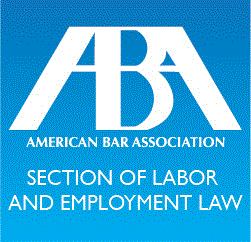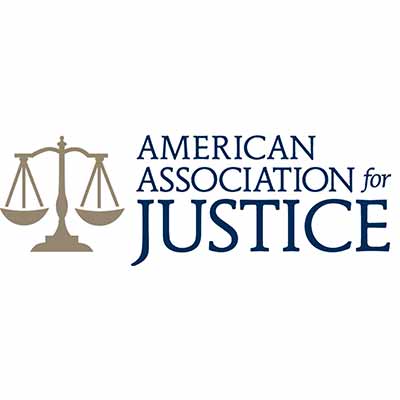FFCRA NEW GUIDANCE AND SUMMARY OF KEY PROVISIONS
FFCRA NEW GUIDANCE AND SUMMARY OF KEY PROVISIONS
The Families First Coronavirus Response Act (FFCRA) came into effect April 1, 2020. This legislation, which represents a significant change to the current law with respect to employees’ rights to sick pay and job protection as related to Covid-19 (coronavirus), was passed and implemented at record speed. Accordingly, the Department of Labor (DOL) has been working at a breakneck pace to issue the necessary regulations and guidelines for the implementation of this important new law. Not surprisingly, the DOL guidance has been amended over the last few weeks. This article is an update as to the provisions and regulations of the law.
On April 1, FFRCA became effective. On that same date, the Department of Labor issued temporary regulations for the public health emergency leave under the family and medical leave act (FMLA) and for Emergency Paid Sick Leave as detailed in the Families First Coronavirus Response Act (FFCRA). Thereafter, relying on the “good cause” exception of the Administrative Procedure Act (APA), the department of labor bypassed the notice and public comment provision, which would generally be required, and proceeded to issue the Final Rule on April 3, 2020.
The Final Rule supplements and clarifies the various publications previously issued from the Department of Labor over the past several weeks. The Department of Labor then updated its prior Q&A guidance based upon the content from the Final Rule. A link to that new guidance can be found here.
Below, we summarize this new law in keeping with these recently issued regulations. However, in reviewing this information and really, any guidance as to the implementation of this law, we caution our readers to check and double check their understanding as there may be changes to the issued guidance, as there have been so often already.
SUMMARY
This legislation created two new emergency paid leave requirements in response to the Covid-19 global pandemic: Emergency Paid Sick Leave (EPSL) and Emergency FMLA Leave (EFMLEA). In combination, the two provisions of the law serve to expand the New Hampshire and federal laws, including the Family Medical Leave Act, to provide job protection and additional wage replacement rights for employees impacted as a result of Covid-19.
In short, emergency paid sick leave (EPSL) allows an employee to take up to 80 hours (two weeks) of emergency paid sick leave for COVID-19 qualifying reasons. (See below) In addition, the Emergency FMLA Leave (EFMLEA) provision, entitles employees to take up to 12 weeks of emergency leave for child-care COVID-19 related reasons.
COVERED EMPLOYEES AND EMPLOYERS
Both requirements of the law apply to employers with fewer than 500 employees and unlike the FMLA, the law does not automatically exclude employers with fewer than 50 employees. Instead, the legislation allows for small employers (with fewer than 50 employees) to seek a hardship exemption from the requirements of the law.
EXEMPTIONS
There are exemptions and exceptions to the application of these two provisions as detailed under the law and applicable regulations.
Exemption under EFMLEA
An employer with fewer than 50 employees may request an exemption to paid EFMLEA leaverequirements if granting leave, we would “jeopardize the viability of the business as a growing concern. “In accordance with these recently disseminated regulations, there are three circumstances in which a small business employer would be potentially exempt:
- If leave would raise expenses above revenue such that the employer would “cease operating at a minimal capacity “;
- the absence would “pose a substantial risk“ to the employer‘s financial health or operations because of the requesting worker’s skills, knowledge, or duties; or
- the employer cannot find enough workers to perform the work of the employee requesting the absence.
If any of these conditions exist, an employer may deny FFCRA leave “only to those otherwise eligible employees whose absence would cause the small employer’s expenses and financial obligations to exceed available business revenue, pose a substantial risk, or prevent a small employer from operating at minimum capacity, respectively. “
Where an employer decides to deny FFCRA leave under this exception, it is required todocument the facts and circumstances that meet the criteria which justify such denial. Employers must retain this documentation, but are not required to send it to the Department of Labor unless and until they are requested to do so.
Exemption under the EPSL
Under the EPSL provision (Emergency Paid Sick Leave)an employer with fewer than 50 employees may seek exemptiononly with respect to employees‘ request for paid Covid sick leave due to childcare issues. Otherwise, it does not appear that the law provides any small business exemption for this paid leave provision under the law.
Health Care Provider Exception
In addition, there are entire categories of employees who are exempt from this statute, regardless of the number of employees they maintain. Specifically, employers are exempt from having to provide emergency paid leave to “healthcare providers.“What’s more, according to the US DOL guidance, the definition of “healthcare provider“ as applied to this exception is very broad and could include any employee employed by a healthcare provider, as well as a long list of employees who are even tangentially related to the provision of health care related services, supplies or health education. The definition includes for example, post-secondary educational institutions offering healthcare instruction, medical schools, local health department or agency, nursing facility, retirement facility, nursing home, healthcare provider, any facility that performs laboratory medical testing, pharmacy, or any similar institution, employer, or entity. This also includes any permanent or temporary institution, facility, location, or site where medical services are provided or that are similar to such institutions. Further, this definition includes any individual employed by an entity that contracts with any of these types of institutions, employers or entities in order to provide services or to maintain the operation of the facility. Health Care employer and workers are urged to review this definition.
The Department of Labor attempts to caution against over-application of the “health care provider” exception. The DOL guidance instructs that in order “to minimize the spread of the virus associated with Covid-19“ it “encourages employers to be judicious” when using this very broad definition to exempt healthcare providers from the provisions of the FFCRA. However, the decision as to implementation of this exception is left to the employers. According to the U.S. Department of Labor, the employers falling under this broad description and exemption may choose to prohibit any of their employees from taking “public health emergency leave“ and “paid sick time“ pursuant to the FFCRA.
Definition of “Health Care Provider” varies under the law
It’s also important to note that where the term “healthcare provider“ is used elsewhere in the statute (for example, with respect to determining an employee’s eligibility for emergency paid leave due to advice from a “healthcare provider“ to self-Quarantine) the definition is not the same as it is for the exception. It is far less broad.
According to the US DOL guidance the term “healthcare provider“ with respect to the other portions of the statute is the same as defined under the family medical leave act. Therefore, advice from a “health care provider” must come from a licensed doctor of medicine, nurse practitioner, or other healthcare provider as defined under the FMLA.
Immediate Eligibility
Another key difference, between the FFCRA and the rights and benefits provided under the FMLA (family medical leave act), is the fact that employees working for at least 30 days for a covered employer will be eligible immediately to use the Covid leave provided under the FFCRA. By comparison, in order for an employee to be eligible under family medical leave, previous to this new law, an employee had to be employed for a year or more and have worked 1250 hours at a minimum for an employer with more than 50 employees within a 75-mile radius. These FMLA requirements are not applicable to the FFCRA legislation. Part time employees and full time employees are eligible.
KEY ELEMENTS OF EMERGENCY PAID SICK LEAVE (EPSL)
The emergency paid sick leave act (EPSLA) permits employees to use sick leave related to Colbert-19 and provides full-time employees with 80 hours paid sick leave. This is a significant change for New Hampshire employees. New Hampshire law has never required that employees working for employers with fewer than 50 employees provide any sort of sick leave protection (with the exception of sick leave that may constitute an accommodation for a disability or in keeping with New Hampshire discrimination laws). Hampshire does not have state sick leave laws that require employers to get employees protected time away from work and does not have a law that requires for paid sick leave. Federal family medical leave act applied to New Hampshire employers and employees where the employer had more than 50 employees, however even under that provision of the federal law, employers are not required to compensate employees for their time away from work due to a serious medical condition. As such, this provision of the law will provide a significant new benefit to New Hampshire employees. The key provisions of this law are as follows:
- All full-time employees (subject to limited exceptions) regardless of their links of employment or entitled to take 80 hours paid sick leave immediately. Part time employees get a prorated amount.
- These new sick leave amounts are in addition to not in Lou of any other statutorily provided or employer-provided paid sick leave benefits, and further, employers must permit employees to use covert-19 related sick leave before other sick leave.
- These amounts cannot be carried over into the new year and will expire as of December 31, 2020. Moreover, these amounts are not paid out at termination of employment, regardless of the date of such termination.
- Employees are entitled to this paid sick leave in the event they cannot work or telework because:
- They are subject to a federal, state, or local Quarantine or isolation order related to covet-19;
- The employee has been advised by a healthcare provider to self-quarantine due to Covid-19-related concerns;
- The employee is experiencing symptoms of covid-19 and seeking a medical diagnosis;
- The employee is caring for someone Who is subject to a quarantine or isolation order or who has been advised to self-Quarantine;
- The employee is caring for a child if the child school or place of care is closed or the childcare provider is unavailable because of Coburn-19 precautions; or
- The employee is experiencing any other substantially similar condition specified by the secretary of health and human services in consultation with the secretary of treasury and the secretary of labor.
- Under this paid sick leave provision, employers are required to pay employee
- at his or her regular rate of pay up to a maximum of $511 per day and $5110 in the aggregate for sick leave used under reasons one through three above (employee Quarantine or isolation order, self-Quarantine recommendation or experiencing symptoms and seeking treatment).
- at 2/3 his or her regular rate of pay capped at $200 per day and $2000 in the aggregate for sick leave used under reasons four through six above (caring for others and additional government-specified conditions).
- As with the emergency family medical leave provision there are separate provisions regarding this paid sick leave benefit for employers’ subject to a multi-employer collective bargaining agreement
- Employers must post a notice related to this section in a conspicuous place in the workplace. Find a copy of the model notice issued by the department of labor here
- The law went into effect April 1, 2020 and remains in effect until December 31, 2020.
KEY ELEMENTS OF THE EMERGENCY FMILY AND MEDICAL LEAVE EXPANSION ACT (EFMLEA)
The Emergency Family Medical Leave Expansion Act amends the Family Leave and Medical Leave Act of 1993 by permitting eligible employees to use FMLA leave related to a public health emergency for child care related absences. This provision also affords wage replacement right that did not exist under the FMLA. Among the key provisions of this legislation are the following:
- Covered employees may take up to twelve (12) weeks of job protected FMLA leave where they are unable to work or telework because of the need for leave to care for a son or daughter if their (primary or secondary) school or place of care has been closed, or if their child care provider is unavailable, because of a public health emergency declared with respect to covid-19 (coronavirus).
- The first 10 days of the leave is unpaid. However, employees may elect to use accrued vacation, personal leave, or sick leave (including emergency paid sick leave) for these first 10 days. As compared to the FMLA, an employer may not require the employee to use available paid leave for the first 10 days.
- After the initial 10 days are exhausted, employers are required to pay employees not less than 2/3 of the employees’ regular rate of pay for each day of EFMLEA leave taken thereafter. The employers’ requirement to make this payment is capped at $200 per day and $10,000 in the aggregate.
- There are separate provisions regarding this paid leave benefit for employees’ subject to a multi-employer collective-bargaining agreement.
- Employees taking leave provided under this law do not have any greater right to continued employment then those not on leave. This means that employees on this leave would not be immune from termination due to elimination of a position, closure of the business or as a result of misconduct, for example.
- Employees working at an employer with fewer than 25 employees have limitations with respect to their rights to reinstatement.
INTERMITTENT LEAVE
The FFCRA does not require an employer to provide intermittent leave to its employees. However, by agreement of the employer and employee, intermittent leave may be provided. Absent agreement, no leave under the FFCRA may be taken intermittently. While the agreement need not be in writing, “in the absence of a written agreement, there must be a clear and mutual understanding between the parties that the employee may take intermittent paid sick leave for intermittent expanded family and medical leave, or both. “
Of note, Both FFCRA and the DOL regulations “encourage employers and employees to implement highly flexible telework arrangements that allow employees to perform work, potentially at unconventional times, while tending to family and other responsibilities, such as teaching children whose schools are closed for Covid-19 related reasons.”
COORDINATION OF LEAVE AND PAY BENEFITS UNDER FFCRA
Both the paid sick leave provision and the family leave provisions of the FFCRA provide for leave when needed to care for an employee’s son or daughter due to Covid-19 related school or care provider closures\unavailability. The Final Rule confirms that when an employee qualifies for such leaves under both sections of FFCRA, an employee may first use two weeks of paid leave under the sick leave provisions, to run concurrently with the first two weeks of unpaid leave under the family leave provisions. This would then be followed by up to 10 additional weeks of paid family leave under the family leave provisions for any remaining leaves taken for this purpose.
FUNDING
The law provides tax credits to employers paying out leave benefits under this law. The tax credits for paid sick and paid family and medical leave act provides a refundable tax credit equal to 100% of qualified paid leave benefits paid by an employer subject to certain caps and offset against Social Security taxes paid by the employer. This means that employers will be responsible, in the first instance, for fronting the cost of this paid leave benefit legislation.
CHECK BACK AS THERE IS SURELY MORE TO COME.
Learn more about COVID-19 and how it relates to unemployment and workers' compensation in New Hampshire from our Coronavirus Resource Center.






